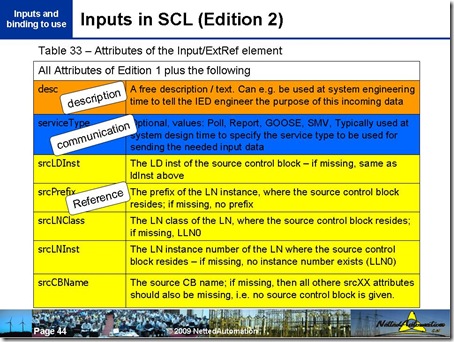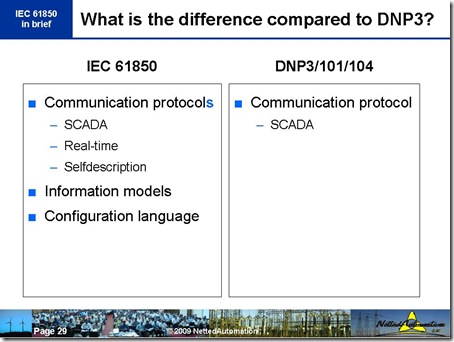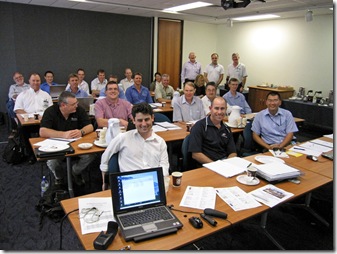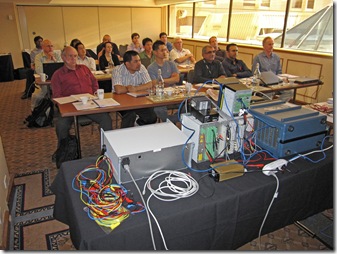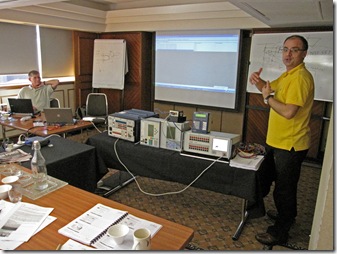The 2010 IEEE Transmission and Distribution Conference and Exposition (New Orleans, 19-22 April 2010) has the title: Smart Solutions for a Changing World.
What makes the Grid smart? Smart people that develop smart solutions! One of these smart solutions will be presented (by smart people) on
Wednesday, 21 April, 2010 8:00 AM-10:00 AM
IG01Wd1
Intelligent Grid Coordinating Committee Poster Session
2010TD0592: Towards Intelligent Smart Grid Devices with IEC 61850 Interoperability and IEC 61499 Open Control Architecture
The Smart Grid vision, outlined in EPRI’s “Report to NIST on the Smart Grid Interoperability Standards Roadmap”, incorporates into the grid “the benefits of distributed computing and communications to deliver real-time information and enable the near-instantaneous balance of supply and demand at the device level”. This vision implies a multilayer information and control system architecture, with power transmission and distribution layer playing a crucial role in achieving the “smartness” of the grid.
The complexity of this task requires reconsidering grid control architectures, possibly changing them from the traditional hierarchical topology with distributed data acquisitions but central decision making, to decentralized decision making. For that, basic automation devices would need to become “intelligent”. Most advanced version of such devices are currently based on microcomputers with communication capabilities, but the data flow is purely bottom up, from devices to the control center, and control flow is opposite: from the control centre to instruments. In Smart Grids this may need to change to horizontal communication, negotiation and collaborative decision making by the instruments.
There has been considerable amount of research on the corresponding computing architectures capable of implementing such distributed intelligence. For example, multi-agent system architectures for grid automation have been proposed. Unfortunately these ideas cannot be implemented on current grid devices based on proprietary and closed hardware/software platforms. Besides, multi-agent implementations require high computation performance and still cannot deliver sufficient real-time performance and determinism. While multi-agent systems need powerful workstations to run, practitioners in the field are very conservative and insist on high reliability, determinism and performance of the microprocessor-based instruments. Reliable communication is crucial, and interoperability amongst IEDs (Intelligent Electronic Devices) is of paramount importance.
Thus, practical deployment of intelligent multi-agent solution at the transmission and distribution layer of Smart Grid can happen if a new generation of IEDs appears that have open architecture based on industrially accepted standards in the areas of information, configuration, communication and distributed automation.
The paper presented proposes an approach to pave the way to multi-agent intelligent control of grid is using two standards: IEC 61850 and IEC 61499.
IEC 61499 (Function Blocks) promises a framework for gluing those functions together in patterns of increasing capability and complexity.
Abstract-- The paper reports on developments and experiments conducted to prove the feasibility of using decentralized multi-agent control logic in the automation of power distribution networks. The utility network is modelled as communicating logical nodes following IEC 61850 standard’s architecture, implemented by means of IEC 61499 distributed automation architecture. The system is simulated in an IEC 61499 execution environment combined with Matlab and proven to achieve simple fault location and power restoration goals through collaborative behaviour and interoperable devices.
Index Terms-- Smart Grid, IEC 61850, interoperability, distributed intelligent automation, IEC 61499


